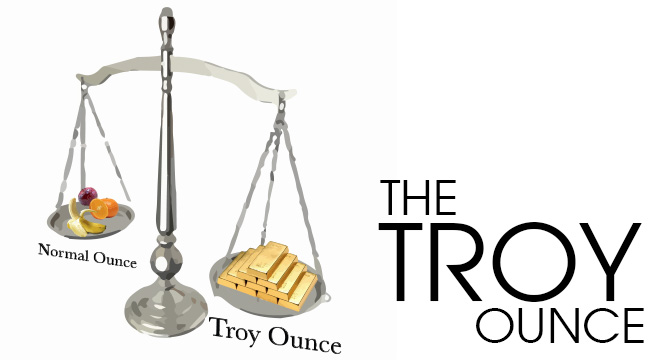One of the main questions that we are often asked by first-time customers looking to sell their valuables is: “What is the process?” While that depends entirely on the item itself, its condition, the market price for its material on a given day, and so on, one factor we take into account is the item’s weight, especially when it comes to precious metals. This value is based upon the actual weight measurement of the materials at hand.
Seems straightforward, right? But did you know that precious materials have their own standard unit of measurement? Chances are when someone refers to the weight of an ounce, they are referring to the avoirdupois ounce used on bathroom scales, kitchen scales, produce scales, etc. Precious metals, however, are measured in troy ounces. The difference between these standards of measurement is minimal—a troy ounce weighs 31.103 grams, while an avoirdupois ounce weighs 28.349 grams. But it’s important to understand that a troy ounce weighs slightly more than the ounce most of us are used to.
 The term “troy” is assumed to have been adapted from the name of the French market town of Troyes. The merchant fair held there is believed to date back centuries, and was known to have grown internationally famous by the 13th century. As one of the most significant centers of commerce in existence at that time, with merchants attending from various countries, it was necessary to have a standard system of weights and measures that would be understood by all. It’s easy to forget in our modern world that operates on systems of paper and electronic transactions, that once upon a time money was a commodity measured by the weight of real goods.
The term “troy” is assumed to have been adapted from the name of the French market town of Troyes. The merchant fair held there is believed to date back centuries, and was known to have grown internationally famous by the 13th century. As one of the most significant centers of commerce in existence at that time, with merchants attending from various countries, it was necessary to have a standard system of weights and measures that would be understood by all. It’s easy to forget in our modern world that operates on systems of paper and electronic transactions, that once upon a time money was a commodity measured by the weight of real goods.
As the avoirdupois ounce became more popular, the troy ounce was retained for measuring gold, platinum, silver, and even gunpowder to maintain purity standards and common measures across time. A majority of the bullion, bars, and coins still in existence today were cast and created in troy ounces, so to convert everything into avoirdupois ounces now would create a bit of a headache! Items would have to be individually converted and recalculated every time, or melted down and recast at a different weight entirely. So the troy ounce lives on, operating in harmony with the common avoirdupois ounce.